Forgery of ancient objects
1988/10/01 Torrontegi, E. Iturria: Elhuyar aldizkaria
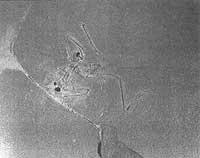
The forgeries have recently been headlines of newspapers. Recently (last year specifically) there was a strong debate on the fossil Archaeopteryx, which confirmed that it was not forgery. An art, a history or a prehistoric museum must guarantee the authenticity of all its objects. In the British Museum there is a group of scientists who are responsible for this task. The main task of this laboratory, often using objects from the museum collection, is to carry out a basic research. He carries out data studies on objects, as well as the technologies used to analyze the composition of old objects and to produce objects.
When an object is considered suspicious, it makes its first scale in these laboratories, since scientific knowledge of what may be behind the object is very important.
There are two types of cases: In fact, in London, antique dealers offer the museum an object to buy it. Another 50% comes from the museum's internal collection. XIX. In the 19th and beginning of this century many philanthropists gave the museum extensive collections of more than 20,000 pieces. It was impossible to analyze each piece. In this way, the realization of new catalogs or the reorganization of collections by the museum has occasionally generated debates on authenticity.
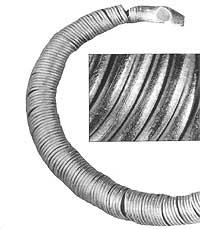
Experts, with just looking at or with the optical microscope, can say many things about an object. They can indicate whether the object has been cast into the mold or by hand (hammer).
The silver bath was very complicated. Until the end of the twentieth century. Experts immediately separate the old silver bath from the current electrolytic coating.
Through the optical microscope, the secrets of a wonderful golden doll located in the museum's Egyptiar department were discovered. According to art historians, the bracelet was created at the time of the Ptolemy of Egypto. But expert Andrew Oddy, after analyzing the bracelet under a microscope, believes that the main part can be recent, although the gold of the last pieces is from the time of Ptolemy.
Another very useful technique is radiography. Sometimes artisans restore very well the broken objects and the external view of the surface does not allow to detect damage. However, by analyzing the object with X-rays or other types of radiation, the following renewals can be detected. Example of Chinese bronze container. (See photo).
The chemical composition of an object is very important to know when it is. The materials formerly used or currently used are not the same.
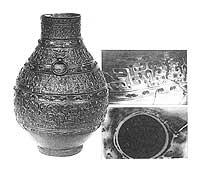
For example, the processes of extraction of small amounts of gold in the silver graves are relatively new. Any antique silver object, then, will have remains of gold. Similarly, before that, gold was extracted from river deposits and not from deep mines, as we do today. This gold will have traces of osmium and iridium that are not found on the soil of the mine. The electronic microscope allows to observe these impurities.
The study will of course not have to damage the objects to sell. Therefore, the laboratory cannot take samples to analyze its composition. The fluorescence of X-rays is one of the harmless procedures.
The fluorescence of X-rays can only determine the chemical composition of the outer layer, since the radiation can only penetrate some superficial microns. Although the chemical composition of the surface layer (called patina) is very representative.
The true patina is formed very slowly. Counterfeiters can introduce the object to the chemical solution and thus accelerate the process, but often a suitable element is not established on the surface of the object. Due to its inadequate chemical composition, it can be warned of false patina. In other cases, counterfeiters mix the appropriate chemical elements and add them to the object using organic sticker. If the object is analyzed with ultraviolet light, it is very easy to see the false patina, thus putting the chemical compound in sight. Unfortunately, XIX. The harvesters of the twentieth century have often changed the skate of bronze figures. They liked the dark looking images.
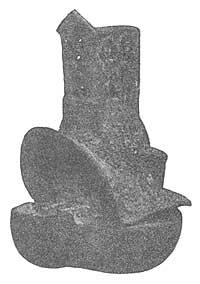
Richard Payne Knight, one of the benefactors of the British Museum, for example, has removed the royal skate from his collection and has artificially darkened.
One of the applications of X-ray fluorescence was the Drake Brass Plate. The scientists conducted numerous studies on this dish discovered in 1938. However, the whole debate was resolved in 1977. Historically speaking, the brass formed by zinc and copper is a relatively new alloy that replaces the most expensive and ancient bronze. This is the alloy of copper and tin. The higher the amount of zinc present in the brass, the later it has been produced. The analysis of this dish showed an abnormal amount of zinc. However, archaeologists found some pieces of Elizabethan brass with the same level of zinc. This plate did not contain lead or tin and the pieces of this time that have been analyzed to date had one or more of these elements. The thickness of the plate was also uniform and in the Elizabethan era this characteristic was not very normal.
What has been said so far has been about metallic objects, but many of the ancient objects are made of clay. It is very difficult to distinguish a modern and original copy of an old piece. The technique used for this is thermoluminescence, based, as its name indicates, in the light emitted by heat. Modern detection systems allow measuring the thermoluminescence of most of the glazed materials, including clay.
Termoluminescence can distinguish two containers, apparently equal, from different eras. It began to be used as an archaeological tool in 1969, as the researchers used it to study the fleet found in Hacilar (Turkey) in the 1950s.
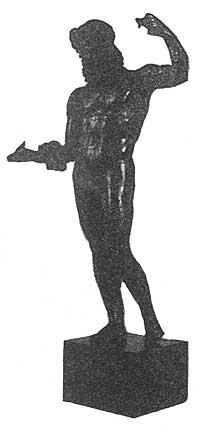
This technique is also very useful for detecting real bronzes. The first step to shape the bronze is to prepare the clay male. After waxing this clay male, the sculptor shapes him until he gets the final shape he wants to give him. Surrounding the wax is placed another layer of clay and then a clay mold is made to which the sculptor launches the cast bronze. In the open base bronze states, the last step, normally, was to remove the clay male to lighten the weight. However, there is always a little clay left and analyzing this clay the luminescence can differentiate the ancient bronzes from the modern ones.
Forgers are currently facing the enormous scientific and technical breakthrough. And perhaps more important is that more and more nations are illegalizing the export of ancient objects. Today, prestigious museums do not so easily buy the object that has appeared without documentation on the market.
The normal thing is that there is illegal forgery or export.

Gai honi buruzko eduki gehiago
Elhuyarrek garatutako teknologia



